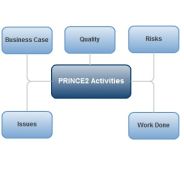5 Steps for Successful Organizational Redesign

Organizational redesign involves a series of steps for changing your business management structure, culture, and processes. It also means creating a new hierarchy for leadership and delegation of duties.
As your business grows and thrives, you may need to take some organizational redesign steps to integrate better strategies and processes to support the change.
Ideally, organizational redesign addresses adverse outcomes and reinforces positive results. It may involve specific changes to some departments or the entire organization.
You may have to go back to the drawing board and rethink everything, starting from your business objectives to business processes, then refocus your design to meet these objectives.
Organizational redesigning may be challenging and daunting. It requires careful self-evaluation, planning, and execution of the new designs. The good news is that you don’t have to do this alone. You can hire leadership consultancy Navalent.com for business assessment expertise that’ll help take your organization to another level. That said, here are five steps for a successful business redesign.
1. Redefine Your Goals and Objectives
The first step of organizational redesign is redefining your goals and objectives. Next, outline what you want to achieve in the short and long term. It gives you clear reasons for the transformation and ensures you align the organization’s development and redesign with your objectives.
It also allows you to determine whether or not redesigning is the answer to improving business outcomes. Not every issue requires a complete organizational redesign. Sometimes you can tweak a few things here and there and achieve the same results without spending a massive amount of money on a complete transformation.
Defining your goals allows you to focus on your goals and create better strategies. It’ll also help you prioritize your design process.
For instance, if your main goal is to increase the number of products you manufacture within a month, your redesigning process will start at the production department.
However, focus on your long-term aspirations rather than short-term goals. It enables you to future-proof your organization, adapt to changing market trends, gain a competitive advantage, and build a thriving business.
2. Survey Your Current State
You must evaluate the current state of your business before redesigning your organization. If you don’t, the chances of the new structure and process succeeding will be minimal. This organizational redesign step involves planning, developing new strategies, and allocating resources.
You must conduct a full company assessment to gather data on your team’s performance to understand where everyone fits.
Also, ensure your review covers all aspects of the business, including organizational culture, processes, structure, workflow procedures, and systems.
From there, you can identify the strategies that need automation and determine whether you need to create a specific organizational culture.
3. Understand the Key Elements of Organizational Redesign
You must understand the various elements influencing your decisions to create or implement organizational redesign. These aspects outline the relationships, roles, and responsibilities of everyone in the organization.
They include the following:
- Departmentalization involves dividing your team into compartments or departments and assigning each specific task they’ll perform as a group. Many businesses have several departments in their organization. The departments you have in your organization will depend on the type of business you conduct. However, the most crucial ones to include in your new structure are the finance, accounting, human resource, customer service, and administration departments.
- Centralization and Decentralization: these elements determine who has the power to make effective business decisions. In centralization, all decisions come from the senior manager, while decentralization includes the junior manager and team leaders. Consider centralizing all your choices if you run a larger organization. However, decentralization may be the best way to go if you’re just a startup.
- Work Specialization involves the division of labor among your team, ensuring everyone understands their responsibilities and what you expect from them. Work specialization is crucial for your redesigning as it allows you to optimize processes and structure and eliminate task redundancy.
- Chain of Command: This outlines the company hierarchy or the positioning of team members within the organization, depending on the ranks, status, and job function. When redesigning, ensure you set clear lines of communication and authority to streamline your business operations. You can only have some people reporting to you. It’ll be time-consuming, ineffective, and exhausting.
- Span of Control refers to the number of team members each manager or leader can oversee. Smaller teams are easier to manage. The leaders can easily foster relationships and build trust with team members. They can easily communicate their misgivings and point out weak points that limit productivity. Therefore, when restructuring your organization, consider setting a narrower span of control.
- Formalization involves your internal procedures, rules, and policies on business operations. It dictates the workplace rules, like the number of breaks a team member can take. This reduces time wastage and ensures every member focuses on their tasks.
It would be best to focus on these critical elements when redesigning your company structure. They ensure you achieve efficiency, improve productivity, and increase profit margins.
4. Create the New Design
Now that you understand the key elements to include in your new organizational structure, you can create your new design. Ensure you build the model depending on the data you collected during the evaluation.
Don’t make the mistake of creating your strategy based on your intuitions or other untested hypotheses. Instead, base your new design on real insights.
Also, ensure you apply the right mixture of people, strategy, and other crucial aspects of the business to choose the correct blueprint. You should also ensure your design aligns with your objectives and is simple and flexible enough to accommodate future changes and business expansion.
5. Implement the Change
Implement the new change once you have the new design. However, you should note that not all team members will embrace the change. As a result, you’ll face some resistance which may drag your redesigning process.
Overcoming barriers to change may need to consider an entirely new approach. For one, you’ll have to communicate the change to all shareholders to help them understand the need for redesigning. Sharing your intentions and objectives will help foster trust, and people will be more receptive to change.
You can also involve the managers and leaders throughout the redesigning process. They’ll help implement and communicate the changes to the team members. They’ll also help monitor and evaluate the success of the new techniques and restructuring, which will help you determine whether or not the new design is working as it should.
Conclusion
Organizational redesign requires strategic planning, evaluation, and implementation. You must redefine your objectives, evaluate your current state, and implement new designs.
Doing this alone can be challenging, and you’d want to include your managers and leaders. Additionally, you can outsource services from qualified experts to help recreate a better and more functional organization.











